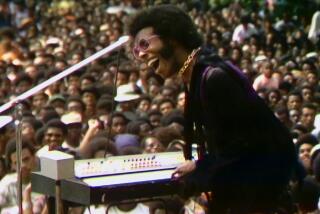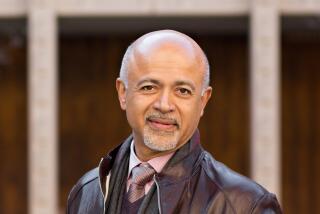‘Cutting for Stone: A Novel’ by Abraham Verghese
- Share via
A novel set in Africa bears a heavy burden. The author must bring it home, that continent, into the reader’s more defined existence: To help the reader sit in a chair and imagine Africa; vast, ancient, sorrowful, beautiful Africa. In the last decade I’ve read books narrated by characters homesick for Africa; books narrated by or about child soldiers; books about politics; books full of splintering history. Abraham Verghese’s “Cutting for Stone” is the first straightforward, quotidian novel set in and largely about Africa that I’ve read in a good long time -- the kind Richard Russo or Cormac McCarthy might write, the kind that shows how history and landscape and accidents of birth and death conspire to create the story of a single life.
Perhaps it is because the narrator, Marion Stone, is a doctor that you know there will be pain, healing, distance, perspective and a phoenix rising from the ashes of human error. Stone reconstructs his half-century with a child’s wonder: “I believe in black holes,” he thinks, now many years a surgeon in New York and miles from the clinic in Ethiopia where he and his twin brother, Shiva, orphaned not by war but by one man’s internal, ancestral war, grew up. “I believe that as the universe empties into nothingness, past and future will smack together in the last swirl around the drain.”
The twins are orphaned when their mother, Sister Mary Joseph Praise, a lovely, saintly young nurse from India, dies in childbirth and when their father, a British surgeon named Thomas Stone, runs away from the clinic after the bloody birth, mortified and full of despair. Shiva and Marion are raised by the clinic’s gynecologist, Hema, and her husband, a kindly doctor named Ghosh.
The childhood years, until the twins are 12 and Ethiopia’s emperor Haile Selassie is overthrown, are richly written. Verghese knows that beauty is the best way to draw us in and his landscape is lush and exotic: Wild eucalyptus, golden meskel flowers, the Entoto Mountains, rain on the corrugated tin roofs “ceasing abruptly like a chatterbox cut off in mid-sentence.”
The landscape and the characters who live and work in the clinic create something greater than a community, more like an organism. The intimacy of the twins, who sleep most nights with their heads touching (heads that were connected in utero and were separated forcefully at birth by their terrified father), the ghostly purity of their mother and the daily rhythms of the hospital create an inhabitable, safe place, on and off the page.
In lesser hands, melodrama would be irresistible; the peace is vulnerable and, yes, it is shattered, but Verghese has already created characters with integrity that will not be shattered by any event. The young girl both brothers love is given a violent clitoridectomy by her mother. That violence slides in its serpentine way through several lives, but it does not shatter the purity that shelters the twins -- a purity passed from mother to surrogate mother to the children she raised so tenderly. In this and other scenarios Verghese makes the point in his gentle way that violence begets violence; that fanaticism is born from pain.
When Ghosh is dying, he asks Marion to go to the United States to find his father and give him a message from his old friend. Marion leaves during wartime, sick of Africa, and lands in a Catholic clinic in New York. He eventually finds his father, a successful surgeon with a broken heart. His father and brother (whose betrayal with the young woman they both loved still stings) save his life. This is not giving too much away because “Cutting for Stone” (a phrase taken from the Hippocratic oath: “I will not cut for stone, even for patients in whom the disease is manifest”) owes its goodness to something greater than plot. It would not be possible to give away the story by simply telling you what happens. Verghese creates this story so lovingly that it is actually possible to live within it for the brief time one spends with this book. You may never leave the chair.
--
More to Read
Sign up for our Book Club newsletter
Get the latest news, events and more from the Los Angeles Times Book Club, and help us get L.A. reading and talking.
You may occasionally receive promotional content from the Los Angeles Times.










